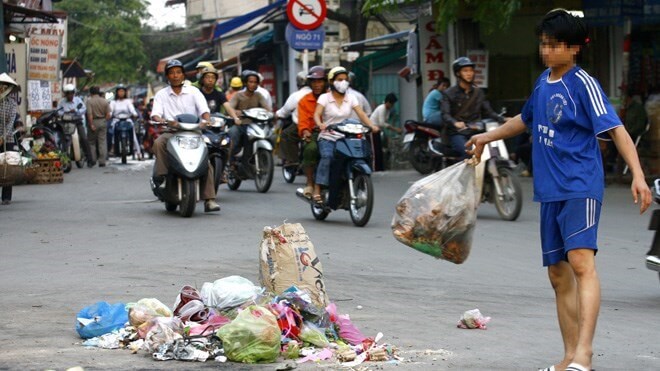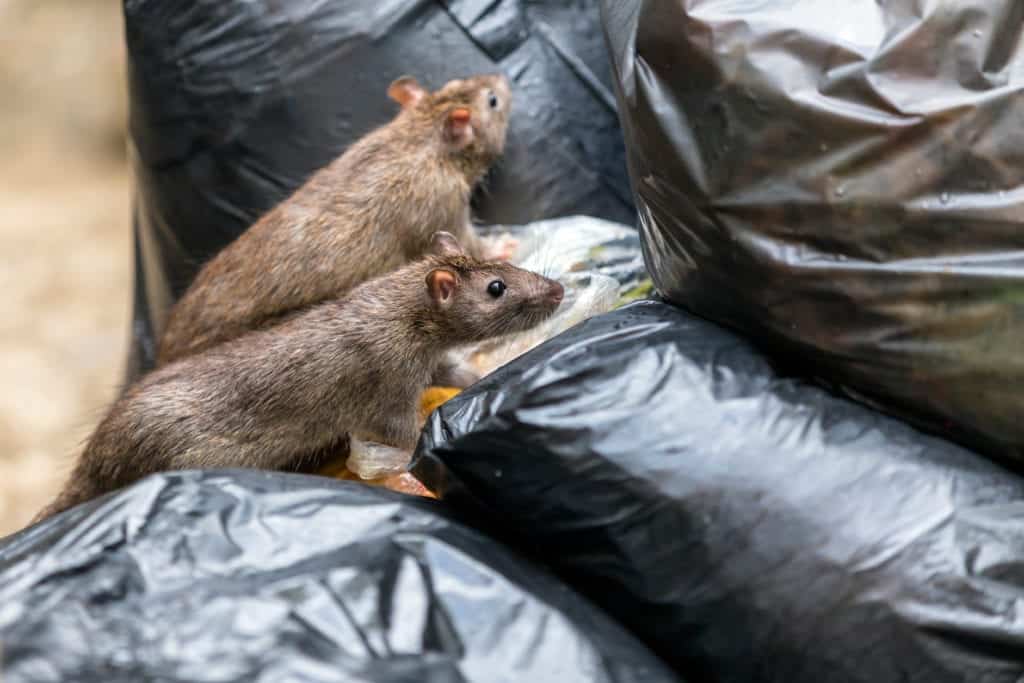Don't Be Lazy-Use the Garbage Can!
12/31/2021 1:25:25 PM
Do you know?
- Littering is the act of throwing garbage or waste anywhere other than in trash cans. Litter costs money with $11.5 billion spent every year to clean up litter.
- Litter can originate from construction and demolition sites, households, industries, uncovered trucks, pedestrians, and moving vehicles.
Let's explore its consequences in the following passage!
Let's learn some new words before you read the passage:
Listen to the passage Don't Be Lazy-Use the Garbage Can! and complete the sentences by dragging the correct word to each blank.
Think about all the garbage cans in your home, at your school, or in offices and stores. There might be a hundred garbage cans at just one school! Imagine what would happen if we dumped all of that garbage into the street. Gross!
Luckily, most people don’t empty garbage cans into the street, but sometimes they throw their gum or a food wrapper on the ground. One tiny piece of trash might not seem like a big deal but think about if everyone did that. It would be like emptying all of the world’s garbage cans into the street.
Littering is a serious . Litter is ugly, and it makes our cities and roads dirty. It also has negative for people and the environment.
When garbage or breaks down, it releases chemicals. Usually, all our trash goes to huge landfills. In a landfill, the chemicals from garbage are contained. But outside of a , these chemicals go into the ground. They can contaminate the soil and even get into our water. For example, the ink on our newspapers can be toxic to the soil and water.
Garbage also pollutes the air. Plastics and other materials release chemicals into the air. If people breathe in this air, they can get sick.
Garbage releases gases, like methane. Methane is a gas that damages the ozone layer around the Earth. The ozone layer protects our planet from getting too hot; if it is damaged, the sun's rays will heat up the Earth.
Trash thrown in the street often comes into contact with animals. Sometimes, these animals accidentally eat the garbage. Trash can also be washed into the and out into the ocean. Unfortunately, there is already a lot of trash in the ocean. It destroys habitats for marine animals.
Trash can be harmful to our health as well. It attracts bacteria and rats. During the Middle Ages, nearly one-third of the Europeans died of the Bubonic Plague. There were no landfills or trash collectors in the Middle Ages, and people just garbage into the streets and rivers. This contaminated the water and attracted rats. The rats had fleas, and the fleas caused the deadly disease.
We are lucky that today we have better systems for getting rid of trash and keeping our streets clean. All you have to do is throw your trash into a garbage can, and workers will do the rest. If you don’t see a garbage can, hold onto your trash until you do. Our environment and our health depend on it.
Read and answer the following questions.
Don't Be Lazy- Use the Garbage Can!
Written by Krista Garver

Think about all the garbage cans in your home, at your school, or in offices and stores. There might be a hundred garbage cans at just one school! Imagine what would happen if we dumped all of that garbage into the street. Gross!
Luckily, most people don’t empty garbage cans into the street, but sometimes they throw their gum or a food wrapper on the ground. One tiny piece of trash might not seem like a big deal but think about if everyone did that, it would be like emptying all of the world’s garbage cans into the street.
Littering is a serious issue. Litter is ugly, and it makes our cities and roads dirty. It also has negative consequences for people and the environment.
When garbage decomposes or breaks down, it releases chemicals. Usually, all our trash goes to huge landfills. In a landfill, the chemicals from garbage are contained. But outside of a landfill, these chemicals go into the ground. They can contaminate the soil and even get into our water. For example, the ink on our newspapers can be toxic to the soil and water.
Garbage also pollutes the air. Plastics and other materials release chemicals into the air. If people breathe in this air, they can get sick.
Garbage releases gases, like methane. Methane is a greenhouse gas that damages the ozone layer around the Earth. The ozone layer protects our planet from getting too hot; if it is damaged, the sun's rays will heat up the Earth.
Trash thrown in the street often comes into contact with animals. Sometimes, these animals accidentally eat the garbage. Trash can also be washed into the sewers and out into the ocean. Unfortunately, there is already a lot of trash in the ocean. It destroys habitats for marine animals.
Trash can be harmful to our health as well. It attracts bacteria and rats. During the Middle Ages, nearly one-third of the Europeans died of the Bubonic Plague. There were no landfills or trash collectors in the Middle Ages, and people just dumped garbage into the streets and rivers. This contaminated the water and attracted rats. The rats had fleas, and the fleas caused the deadly disease.
We are lucky that today we have better systems for getting rid of trash and keeping our streets clean. All you have to do is throw your trash into a garbage can, and workers will do the rest. If you don’t see a garbage can, hold onto your trash until you do. Our environment and our health depend on it.
Source: Mobymax Reading Stories G3.4-3.6
Which of the following is NOT a consequence of littering mentioned in the passage?
- It causes air pollution.
- It pollutes the city landscape.
- It threatens wild animals.
- It poses a threat to people's health.
What is methane?
- A layer that protects the Earth
- A type of liquid chemical released into rivers
- A type of trash thrown in the street
- A greenhouse gas depleting ozone layer
According to the article, how does littering affect marine animals like dolphins or fish?
- Marine animals are safe from litter because they live in the water.
- Birds carry litter to the ocean, where it destroys marine animals' habitats.
- Litter and chemicals can be washed to the ocean, where it destroys marine animals' habitats.
- Many of the diseases that come from trash can get fish and other marine animals sick.
Why should you throw trash into a landfill instead of on the street?
- Landfills burn all the trash, which makes it safe.
- You should not throw your trash away in the landfills.
- Landfills can contain the chemicals found in trash.
- Landfills are already covered in trash, so you can throw trash there.
In the Middle Ages, one-third of Europeans were killed by the Bubonic Plague. What do historians think caused the plague?
- the fleas on rats that came to the cities because of all the trash
- people were poisoning the water supplies with all the trash
- stinky clouds that hovered over the cities because of all the trash
- people eating from the trash because they didn't know any better
What is the synonym of the word "contaminate" in the passage?
- clean
- pollute
- protect
- destroy
What is the main idea of the passage?
- We shouldn't litter because it is harmful.
- Garbage releases chemicals into the ground.
- Methane from garbage can destroy ozone layer.
- It is important to protect the environment.
Build your vocabulary by learning these intensive phrases/idioms
Adam: Sorry I'm late. I got a lot of traffic.
Jamie: _____. We have plenty of time.
- No big deal.
- No offence.
- Fair enough.
Could she have come into _____ with the disease at school?
- force
- contact
- being
Choose the word(s) CLOSEST in meaning to the underlined word(s).
I used weedkiller to get rid of the weeds in the garden.
- remove
- plant
- decorate
Rearrange the words in the correct order to make a complete sentence.
Supply the appropriate form of the word in the bracket.
Their future on how well they do in these exams. (DEPENDENT)